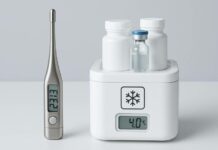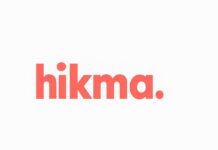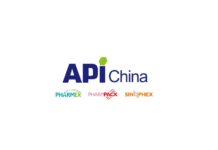Boehringer Ingelheim has announced that the combined treatment experience with Pradaxa® has crossed one million patient-years(1) in the prevention of thromboembolic events in patients after surgery and in patients with non-valvular atrial fibrillation (AF), providing the greatest body of clinical experience among all novel oral anticoagulants. The announcement, made during the European Society of Cardiology (ESC) Congress 2012 in Munich, Germany, reaffirms the confidence physicians have in Pradaxa® to effectively prevent stroke and systemic embolism in patients with non-valvular AF and venous thromboembolic events following hip or knee replacement surgery.
One million patient-years of treatment experience is unprecedented for a novel oral anticoagulant and highlights a broad adoption of Pradaxa® in more than 70 countries worldwide following regulatory approvals in stroke prevention in AF. This level of clinical use shows strong endorsement for the substantial benefits Pradaxa® has demonstrated in the RE-LY® trial *(2,3), and for its positive benefit-risk profile, as recently reconfirmed by the European Medicines Agency.(4)
“It is great to see this treatment being accepted and adopted all over the world for the benefit of patients being effectively protected against thromboembolic events,” commented Professor Klaus Dugi, Corporate Senior Vice President Medicine, Boehringer Ingelheim. “One million patient-years is an important milestone, but even more important is how many strokes our treatment already is likely to have prevented, protecting patients and their families from the impact of this devastating event.”
The benefit of Pradaxa® in stroke prevention in patients with non-valvular AF compared to no treatment can be derived from the reduction in the risk of stroke observed in the pivotal clinical RE-LY® study(2,3) and by comparing against historical trials in AF patients receiving no treatment.(5,6) Taking into account the overall real-world exposure achieved since the first approval of Pradaxa® in this indication, it can be calculated that Pradaxa® may have already prevented up to 40,000 strokes in non-valvular AF patients, compared to no treatment.(1-3,5,6)
Commenting on the news, Professor Hans-Christoph Diener, Department of Neurology, University of Duisburg-Essen, Germany said, “Preventing ischaemic stroke is of utmost clinical importance for healthcare professionals treating patients with AF. With dabigatran 150mg bid, clinicians have a treatment available that prevents more ischaemic strokes than well controlled warfarin and reduces intracranial haemorrhage at the same time. The estimated number of strokes prevented shows the relevance of dabigatran as a safe and efficacious preventive treatment for patients with AF at risk of stroke.”
Pradaxa® 150mg bid is the only novel oral anticoagulant, study of which has shown a significant reduction of ischaemic strokes in patients with non-valvular AF compared to warfarin, offering a relative risk reduction of 25%.(2,3) In RE-LY®, a PROBE trial (prospective, randomized, open-label with blinded endpoint evaluation), Pradaxa® 150mg bid provided a 35% reduction in the overall risk of stroke and systemic embolism versus well-controlled warfarin (INR 2-3, median TTR 67%7).(2,3) Pradaxa® 110mg bid, which is indicated for certain patients, was shown to be non-inferior compared to well-controlled warfarin for the prevention of stroke and systemic embolism.(2,3) Both doses of Pradaxa® were associated with significantly lower total, intracranial and life-threatening bleeding compared to well-controlled warfarin, and Pradaxa® 110mg bid additionally demonstrated significantly lower major bleeding versus warfarin.(2,3)
Stroke Prevention in Atrial Fibrillation
AF is the most common sustained heart rhythm condition8, with one in four adults over the age of 409 developing the condition in their lifetime. People with AF are more likely to experience blood clots, which increases the risk of stroke by five-fold.(9,10) Up to three million people worldwide suffer strokes related to AF each year.(11-14) Strokes due to AF tend to be severe, with an increased likelihood of death (20%), and disability (60%).(15)
Ischaemic strokes are the most common type of AF-related stroke, accounting for 92% of strokes experienced by AF patients and frequently leading to severe debilitation.(16-20) Appropriate anticoagulation therapy can help to prevent many types of AF-related strokes and improve overall patient outcomes.(6)
Worldwide, AF is an extremely costly public health problem, with treatment costs equating to $6.65 billion in the US and over €6.2 billion across Europe each year.(21,22) Given AF-related strokes tend to be more severe, this results in higher direct medical patient costs annually.(23) The total societal burden of AF-related stroke reaches €13.5 billion per year in the European Union alone.(10)
About RE-LY®
RE-LY® (Randomized Evaluation of Long term anticoagulant therapY) was a global, phase III, PROBE (prospective, randomized, open-label with blinded endpoint evaluation) trial of 18,113 patients enrolled in over 900 centres in 44 countries designed to compare two fixed doses of the oral direct thrombin inhibitor dabigatran (110mg and 150mg bid) each administered in a blinded manner, with well-controlled (INR 2.0-3.0, median TTR 67%7) open label warfarin.2,3 Patients were followed-up in the study for a median of 2 years with a minimum of 1 year follow-up.(2)
The primary endpoint of the trial was incidence of stroke (including haemorrhagic) or systemic embolism. Secondary outcome measures included all-cause death, incidence of stroke (including haemorrhagic), systemic embolism, pulmonary embolism, acute myocardial infarction, and vascular death (including death from bleeding). Compared to well controlled warfarin, dabigatran etexilate showed in the trial: (2,3)
Significant reduction in the risk of stroke and systemic embolism – including haemorrhagic strokes with dabigatran etexilate 150mg bid
Similar rates of stroke/systemic embolism with dabigatran etexilate 110mg bid
Significantly lower major bleeding events with dabigatran etexilate 110mg bid
Significantly lower life threatening and intracranial bleeding with both doses
Significant reduction in vascular mortality with dabigatran etexilate 150mg bid.
About dabigatran etexilate
Dabigatran etexilate is at the forefront of a new generation of oral anticoagulants/direct thrombin inhibitors (DTIs)24 targeting a high unmet medical need in the prevention and treatment of acute and chronic thromboembolic diseases.
Potent antithrombotic effects are achieved with direct thrombin inhibitors by specifically blocking the activity of thrombin (both free and clot-bound), the central enzyme in the process responsible for clot (thrombus) formation. In contrast to vitamin-K antagonists, which variably act via different coagulation factors, dabigatran etexilate provides effective, predictable and consistent anticoagulation with a low potential for drug-drug interactions and no drug-food interactions, without the need for routine coagulation monitoring or dose adjustment.
About the dabigatran etexilate clinical trial programme
Boehringer Ingelheim’s clinical trial programme to evaluate the efficacy and safety of dabigatran etexilate encompasses studies in:
Primary prevention of venous thromboembolism (VTE) in patients undergoing elective total hip and knee replacement surgery
Treatment of acute VTE
Secondary prevention of VTE
Stroke prevention in AF
Prevention of thromboembolism after heart valve replacement.
About Boehringer Ingelheim
The Boehringer Ingelheim group is one of the world’s 20 leading pharmaceutical companies. Headquartered in Ingelheim, Germany, it operates globally with 145 affiliates and more than 44,000 employees. Since it was founded in 1885, the family-owned company has been committed to researching, developing, manufacturing and marketing novel medications of high therapeutic value for human and veterinary medicine.
As a central element of its culture, Boehringer Ingelheim pledges to act socially responsible. Involvement in social projects, caring for employees and their families, and providing equal opportunities for all employees form the foundation of the global operations. Mutual cooperation and respect, as well as environmental protection and sustainability are intrinsic factors in all of Boehringer Ingelheim’s endeavors.
In 2011, Boehringer Ingelheim achieved net sales of about 13.2 billion euro. R&D expenditure in the business area Prescription Medicines corresponds to 23.5% of its net sales.
1. Boehringer Ingelheim data on file
2. Connolly SJ, et al. Dabigatran versus warfarin in patients with atrial fibrillation. N Engl J Med. 2009; 361:1139-51.
3. Connolly SJ, et al. Newly identified events in the RE-LY trial. N Engl J Med. 2010;363:1875-6.
4. European Medicines Agency. Press Release, dated May 25th 2012. Available at http://www.emea.europa.eu/ema/index.jsp?curl=pages/medicines/human/public_health_alerts/2012/05/human_pha_detail_000061.jsp&mid=WC0b01ac058001d126
5. Eikelboom JW, et al. Dabigatran efficacy–safety assessment for stroke prevention inpatients with atrial fibrillation. J Thromb Haemost. 2012;10: 966–8.
6. Hart RG, et al. Meta-analysis: Antithrombotic Therapy to Prevent Stroke in Patients Who Have Nonvalvular Atrial Fibrillation Ann Intern Med. 2007;146:857-67.
7. Pradaxa European Summary of Product Characteristics, 2012
8. Stewart S, et al. Cost of an emerging epidemic: an economic analysis of atrial fibrillation in the UK. Heart. 2004;90:286-92.
9. Lloyd-Jones DM, et al. Lifetime risk for development of atrial fibrillation: the Framingham Heart Study. Circulation. 2004;110:1042-6.
10. Fuster V, et al. ACC/AHA/ESC 2006 Guidelines for the management of patients with atrial fibrillation – executive summary. Circulation. 2006;114:700-52.
11. Global Atlas on Cardiovascular Disease Prevention and Control, World Health Organization in collaboration with the World Heart Federation and the World Stroke Organization 2011. Viewed May 2012 at http://www.world-heart-federation.org/fileadmin/user_upload/documents/Publications/Global_CVD_Atlas.pdf.
12. Atlas of Heart Disease and Stroke, World Health Organization, September 2004. Viewed Dec 2010 at http://www.who.int/cardiovascular_diseases/en/cvd_atlas_15_burden_stroke.pdf.
13. Wolf PA, et al. Atrial fibrillation as an independent risk factor for stroke: the Framingham Study. Stroke. 1991;22:983-8.
14. Marini C, et al. Contribution of atrial fibrillation to incidence and outcome of ischaemic stroke: results from a population-based study. Stroke. 2005;36:1115-9.
15. Gladstone DJ, et al. Potentially Preventable Strokes in High-Risk Patients With Atrial Fibrillation Who Are Not Adequately Anticoagulated. Stroke. 2009;40:235-240. 16. Paolucci S, et al. Functional outcome of ischemic and hemorrhagic stroke patients after inpatient rehabilitation. Stroke. 2003;34:2861−5.
17. Petrea RE, et al. Gender differences in stroke incidence and poststroke disability in the Framingham Heart Study. Stroke. 2009;40:1032-7.
18. Meschia JF, et al. Genetic susceptibility to ischemic stroke. Nat Rev Neurol. 2011;7:369−78.
19. Andersen KK, et al. Hemorrhagic and ischemic strokes compared: stroke severity, mortality, and risk factors. Stroke. 2009; 40:2068−72.
20. Roger VL, et al. AHA Statistical Update. Heart Disease and Stroke Statistics—2011 Update. A Report From the American Heart Association. Circulation 2011; 123:e18−e209.
21. Coyne KS, et al. Assessing the direct costs of treating nonvalvular atrial fibrillation in the United States. Value Health 2006; 9:348-56.
22. Ringborg A, et al. Costs of atrial fibrillation in five European countries: results from the Euro Heart Survey on atrial fibrillation. Europace 2008; 10:403-11.
23. Brüggenjürgen B, et al. The impact of atrial fibrillation on the cost of stroke: the Berlin acute stroke study. Value Health 2007; 10:137-43.
24. Di Nisio M, et al. Direct thrombin inhibitors. N Engl J Med 2005; 353:1028-40.
* RE-LY® was a PROBE trial (prospective, randomized, open-label with blinded endpoint evaluation), comparing two fixed doses of the oral direct thrombin inhibitor dabigatran etexilate (110mg and 150mg bid) each administered in a blinded manner, with open label warfarin.(2,3)


















